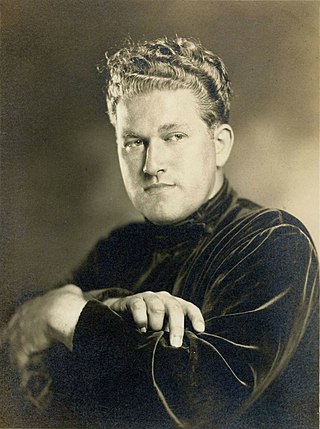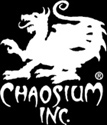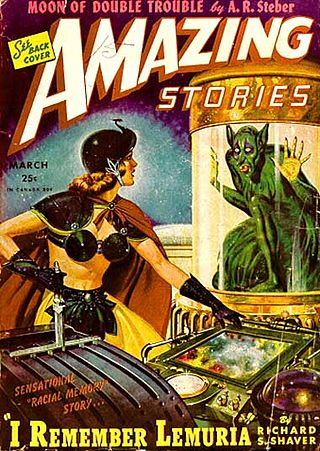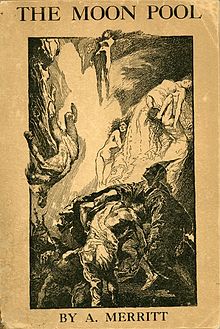Plot summary
The plot concerns an advanced race which has developed within the Earth's core. Eventually their most intelligent members create an offspring. This created entity encompasses both great good and great evil, but it slowly turns away from its creators and towards evil. The entity is called either the Dweller or the Shining One.
Eventually, of the race which created it, only three are left; these are called the Silent Ones, and they have been 'purged of dross' and can be described as higher, nobler, more angelic beings than are humankind. They have also been sentenced by the good among their race to remain in the world, and not to die, as punishment for their pride which was the source of the calamity called the Dweller, until such time as they destroy their creation—if they still can. And the reason they do not do so is simply that they continue to love it.
The Dweller is in the habit of rising to the surface of the earth and capturing men and women whom it holds in an unholy stasis and who, in some ways, feed it. It increases its knowledge and power constantly, but has a weakness, since it knows nothing of love. The scientist Dr. Goodwin and the half-Irish, half-American pilot Larry O'Keefe, and others, follow it down. Eventually they meet a woman, beautiful and evil, named Yolara, who in essence serves the Shining One, and the 'handmaiden' of the Silent Ones, beautiful and good, named Lakla. Both want O'Keefe and eventually battle over him.
There is also a race of very powerful and handsome Polynesian-like 'dwarves' and a race of humanoids whom the Silent Ones developed from a semi-sentient froglike species.
There develops a battle between the forces of good and evil with not only the entire world, but perhaps even the existence of good itself at stake. But can the forces of good prevail using fear as a weapon? Or will they have to rely upon love expressed by willing sacrifice?
Legacy
The Moon Pool is sometimes cited as an influence on "The Call of Cthulhu" by H.P. Lovecraft, which may in turn have itself influenced Merritt's later story Dwellers in the Mirage (especially the monster Khalk'ru). [3] In particular, The Moon Pool is partly set on Nan Madol, [4] a location which would, some claim, later inspire Lovecraft's R'lyeh. [5]
Doug Skinner has highlighted Merritt's work, starting with The Moon Pool, as a major influence on the American writer and artist Richard Shaver:
Shaver’s main literary model was Abraham Merritt. Merritt isn’t read much today, but his fantasy novels were quite popular throughout the ’20s and ’30s. Beginning with The Moon Pool in 1919, he produced a series of novels about caverns, lost races, ancient ray machines, shell-shaped hovercraft, and other marvels. ... Shaver thought Merritt had seen the caves but could only mention them in fiction. One might also suspect that Merritt’s novels had influenced Shaver’s beliefs. [6]

August William Derleth was an American writer and anthologist. He was the first book publisher of the writings of H. P. Lovecraft. He made contributions to the Cthulhu Mythos and the cosmic horror genre and helped found the publisher Arkham House. Derleth was also a leading American regional writer of his day, as well as prolific in several other genres, including historical fiction, poetry, detective fiction, science fiction, and biography. Notably, he created the fictional detective Solar Pons, a pastiche of Arthur Conan Doyle's Sherlock Holmes.

Chaosium Inc. is a publisher of tabletop role-playing games established by Greg Stafford in 1975. Chaosium's major titles include Call of Cthulhu, based on the horror fiction stories of H. P. Lovecraft, RuneQuest Glorantha, Pendragon, based on Thomas Mallory's Le Morte d'Arthur, and 7th Sea, "swashbuckling and sorcery" set in a fantasy 17th century Europe.

Cthulhu is a cosmic entity created by writer H. P. Lovecraft. It was introduced in his short story "The Call of Cthulhu", published by the American pulp magazine Weird Tales in 1928. Considered a Great Old One within the pantheon of Lovecraftian cosmic entities, this creature has since been featured in numerous popular culture references. Lovecraft depicts it as a gigantic entity worshipped by cultists, in the shape of a green octopus, dragon, and a caricature of human form. The Lovecraft-inspired universe, the Cthulhu Mythos, where it exists with its fellow entities, is named after it.

Ramsey Campbell is an English horror fiction writer, editor and critic who has been writing for well over fifty years. He is the author of over 30 novels and hundreds of short stories, many of them winners of literary awards. Three of his novels have been adapted into films.

"The Call of Cthulhu" is a short story by American writer H. P. Lovecraft. Written in the summer of 1926, it was first published in the pulp magazine Weird Tales in February 1928.

Abraham Grace Merritt – known by his byline, A. Merritt – was an American Sunday magazine editor and a writer of fantastic fiction.

Linwood Vrooman Carter was an American author of science fiction and fantasy, as well as an editor, poet and critic. He usually wrote as Lin Carter; known pseudonyms include H. P. Lowcraft and Grail Undwin. He is best known for his work in the 1970s as editor of the Ballantine Adult Fantasy series, which introduced readers to many overlooked classics of the fantasy genre.

Richard Sharpe Shaver was an American writer and artist who achieved notoriety in the years following World War II as the author of controversial stories that were printed in science fiction magazines. In Shaver's story, he claimed that he had had personal experience of a sinister ancient civilization that harbored fantastic technology in caverns under the earth. The controversy stemmed from the claim by Shaver, and his editor and publisher Ray Palmer, that Shaver's writings, while presented in the guise of fiction, were fundamentally true. Shaver's stories were promoted by Ray Palmer as "The Shaver Mystery".

At the Mountains of Madness is a science fiction-horror novella by American author H. P. Lovecraft, written in February/March 1931. Rejected that year by Weird Tales editor Farnsworth Wright on the grounds of its length, it was originally serialized in the February, March, and April 1936 issues of Astounding Stories. It has been reproduced in numerous collections.

Frank Belknap Long Jr. was an American writer of horror fiction, fantasy, science fiction, poetry, gothic romance, comic books, and non-fiction. Though his writing career spanned seven decades, he is best known for his horror and science fiction short stories, including contributions to the Cthulhu Mythos alongside his friend, H. P. Lovecraft. During his life, Long received the World Fantasy Award for Life Achievement, the Bram Stoker Award for Lifetime Achievement, and the First Fandom Hall of Fame Award (1977).
Laird Samuel Barron is an American author and poet, much of whose work falls within the horror, noir, or horror noir and dark fantasy genres. He has also been the managing editor of the online literary magazine Melic Review. He lives in Upstate New York.

Lovecraftian horror, also called "cosmic horror" or "eldritch horror", is a subgenre of horror fiction and weird fiction that emphasizes the horror of the unknowable and incomprehensible more than gore or other elements of shock. It is named after American author H. P. Lovecraft (1890–1937). His work emphasizes themes of cosmic dread, forbidden and dangerous knowledge, madness, non-human influences on humanity, religion and superstition, fate and inevitability, and the risks associated with scientific discoveries, which are now associated with Lovecraftian horror as a subgenre. The cosmic themes of Lovecraftian horror can also be found in other media, notably horror films, horror games, and comics.
The lost world is a subgenre of the fantasy or science fiction genres that involves the discovery of an unknown Earth civilization. It began as a subgenre of the late-Victorian adventure romance and remains popular into the 21st century.

Donald Albert Wandrei was an American science fiction, fantasy and weird fiction writer, poet and editor. He was the older brother of science fiction writer and artist Howard Wandrei. He had fourteen stories in Weird Tales, another sixteen in Astounding Stories, plus a few in other magazines including Esquire. Wandrei was the co-founder of the prestigious fantasy/horror publishing house Arkham House.
Peter H. Cannon is an H. P. Lovecraft scholar and an author of Cthulhu Mythos fiction. Cannon works as an editor for Publishers Weekly, specializing in thrillers and mystery. He lives in New York City and is married with three children.

Beyond the Wall of Sleep is a collection of fantasy, horror and science fiction short stories, poems and essays by American author H. P. Lovecraft. It was released in 1943 and was the second collection of Lovecraft's work published by Arkham House. 1,217 copies were printed. The volume is named for the Lovecraft short story "Beyond the Wall of Sleep".
Richard Louis Tierney was an American writer, poet and scholar of H. P. Lovecraft, probably best known for his heroic fantasy, including his series co-authored of Red Sonja novels, featuring cover art by Boris Vallejo. He lived the latter part of his life in Mason City in the great Corn Steppes of Iowa. Some of his standalone novels utilize the mythology of Lovecraft's Cthulhu Mythos. He is also known for his Simon of Gitta series and his Robert E. Howard completions and utilisation of such Howard-invented characters as Cormac Mac Art, Bran Mak Morn and Cormac Fitzgeoffrey.

The Metal Monster is a fantasy novel by American writer Abraham Merritt. It was first serialized in Argosy All-Story Weekly in 1920 and features the return of Dr. Goodwin who first appeared in The Moon Pool.

Gertrude Barrows Bennett, known by the pseudonym Francis Stevens, was a pioneering American author of fantasy and science fiction. Bennett wrote a number of fantasies between 1917 and 1923 and has been called "the woman who invented dark fantasy".















